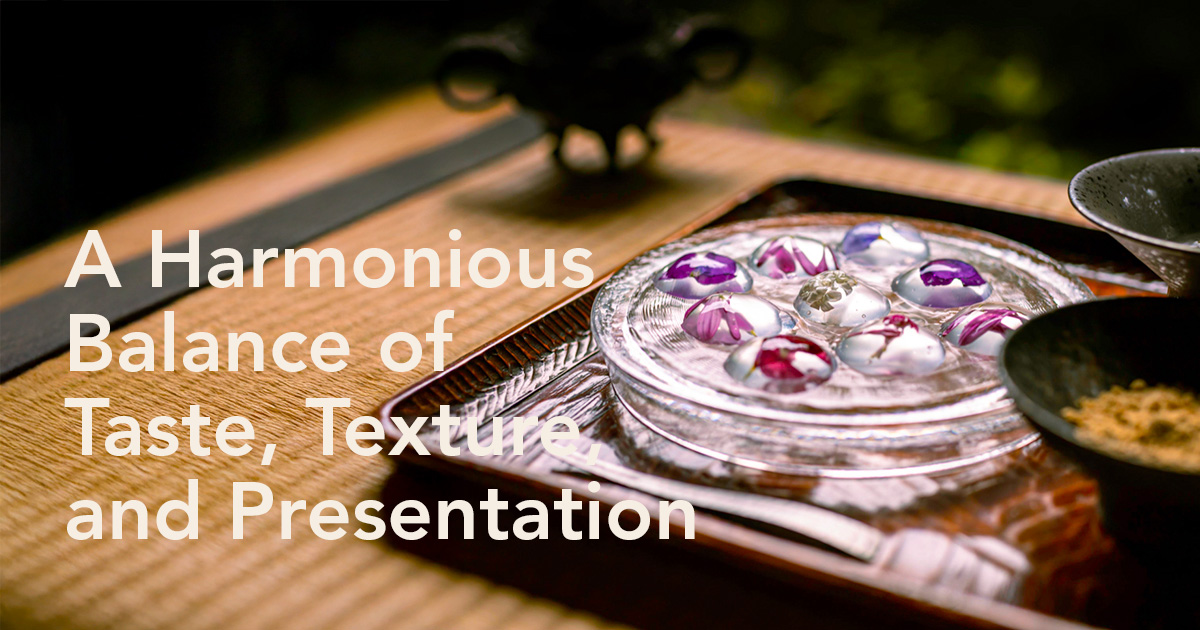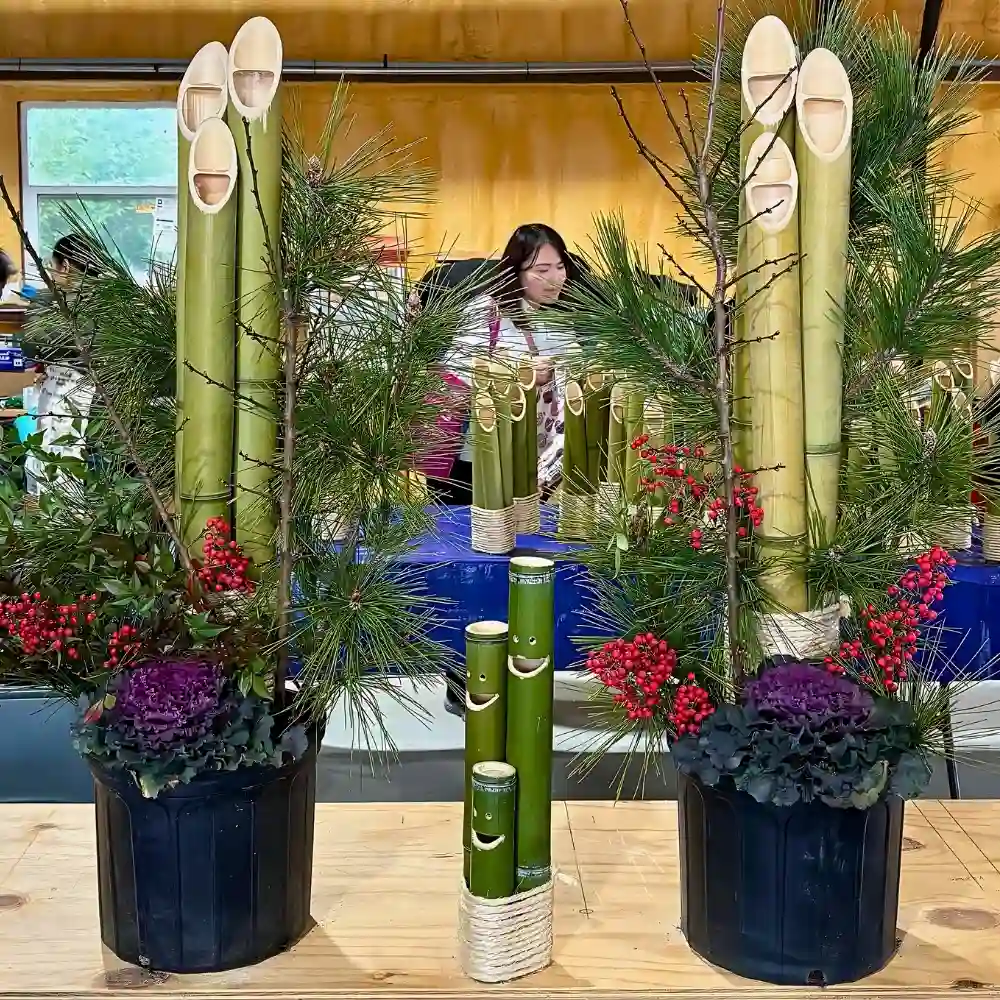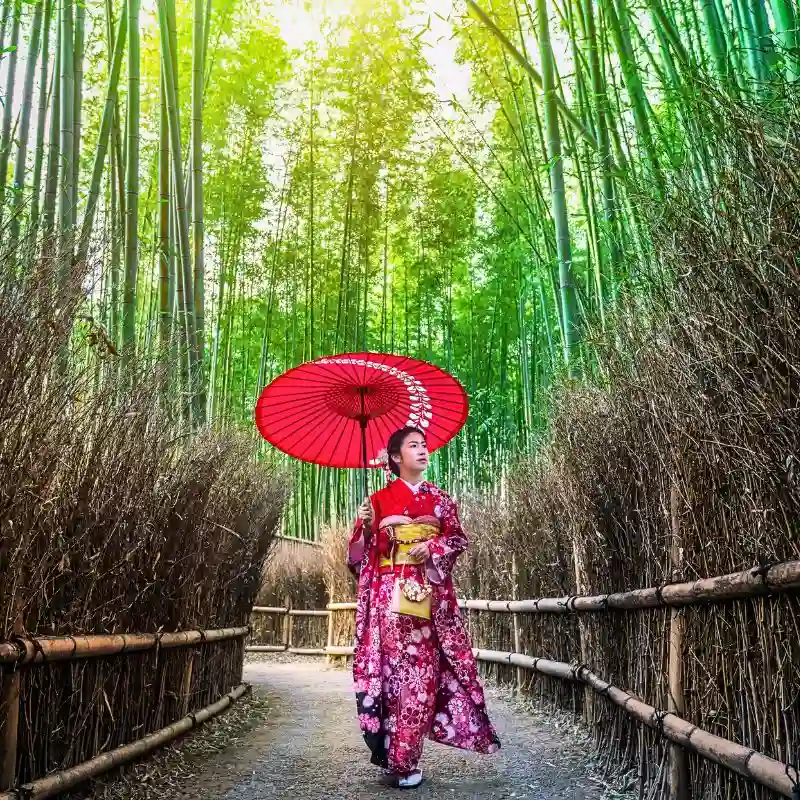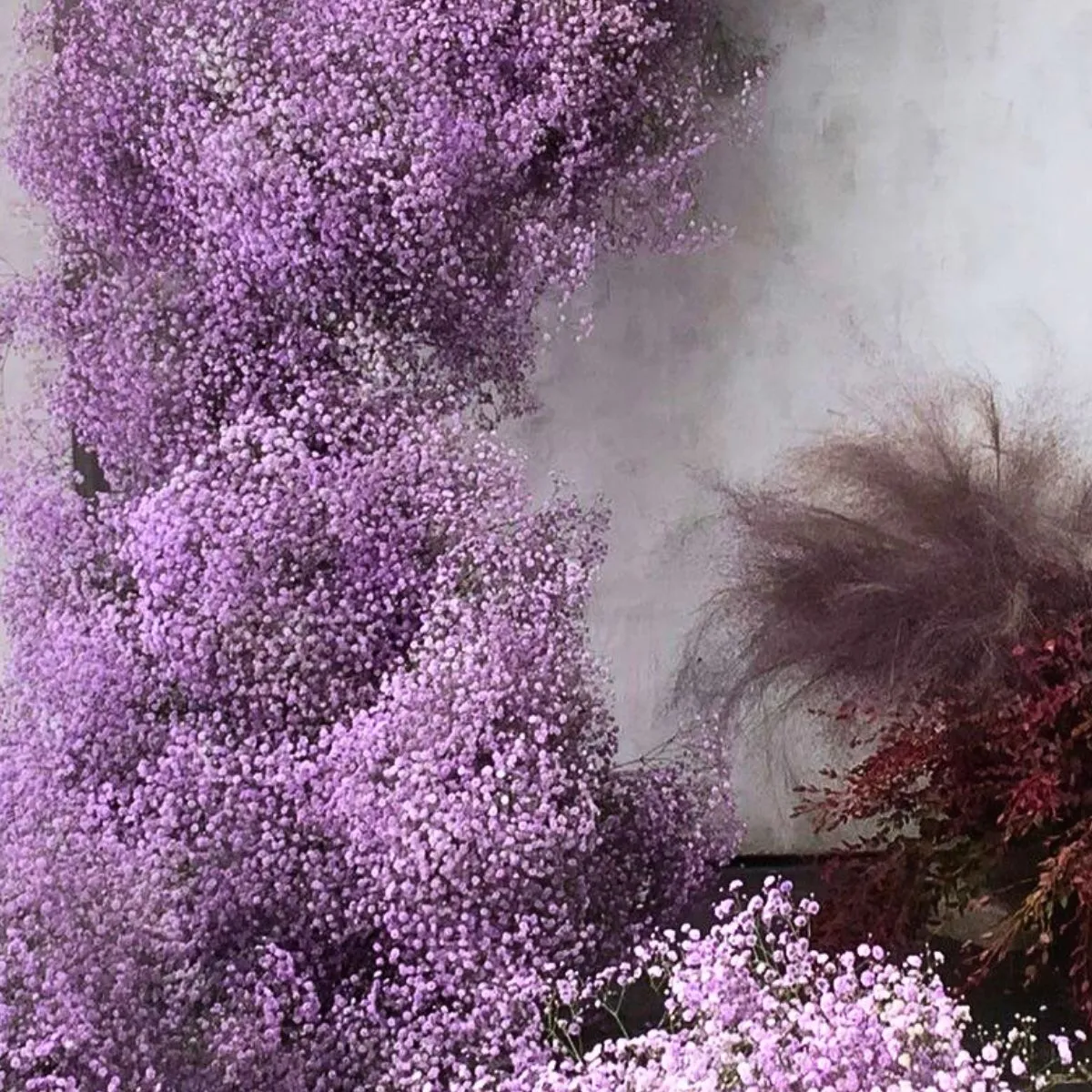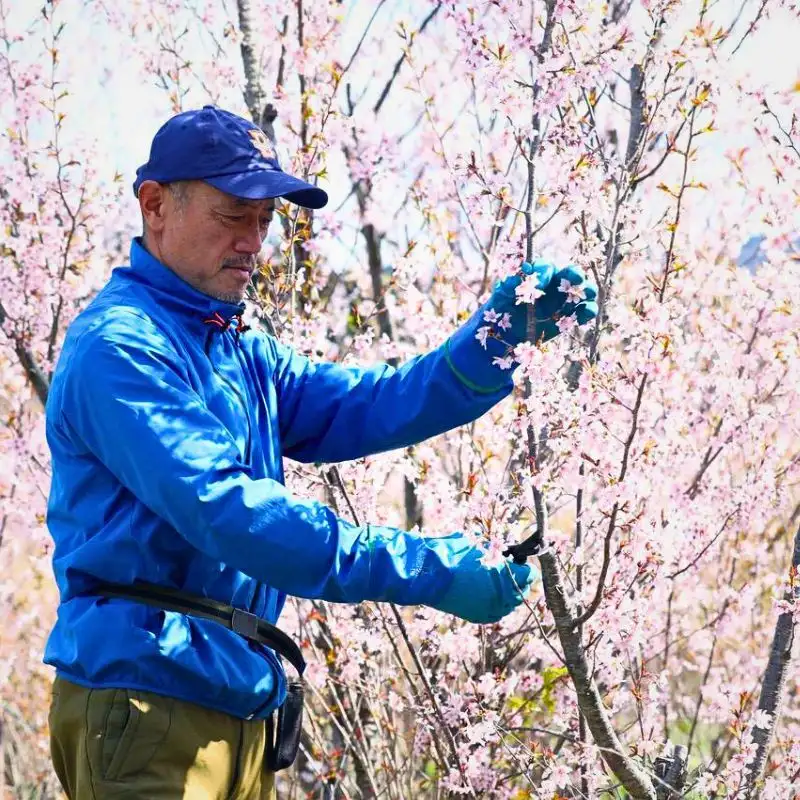I visited Japan for the first time exactly a year ago to celebrate the birthday of a dear friend who turned 80 on February 27, 2024. The experience opened up a whole new world to me, and I returned both culturally and personally enriched, with newfound Japanese friends, unforgettable experiences, and a deep love for this extraordinary country.
I wrote a series of exclusive blog posts on Thursd.com that I named Japan, My Love: 7 Reasons I Fell in Love With Japan. In this series, I will highlight some of the most striking aspects of my journey. We’ve decided to release them weekly, much like a Netflix series, throughout the spring. If you love Japan or are simply intrigued by its beauty and culture, I invite you to join me on this spring blogging journey.
Chapter 6: Japanese Food, a Culinary Journey
When it comes to global cuisine, few countries offer as much variety, artistry, and cultural depth as Japan. Japanese food is more than just sushi, it’s a harmonious balance of taste, texture, and presentation, steeped in centuries-old traditions and regional specialties. I had the privilege of tasting many wonderful dishes with my Japanese friends, and I’d love to introduce you to this remarkable cuisine.

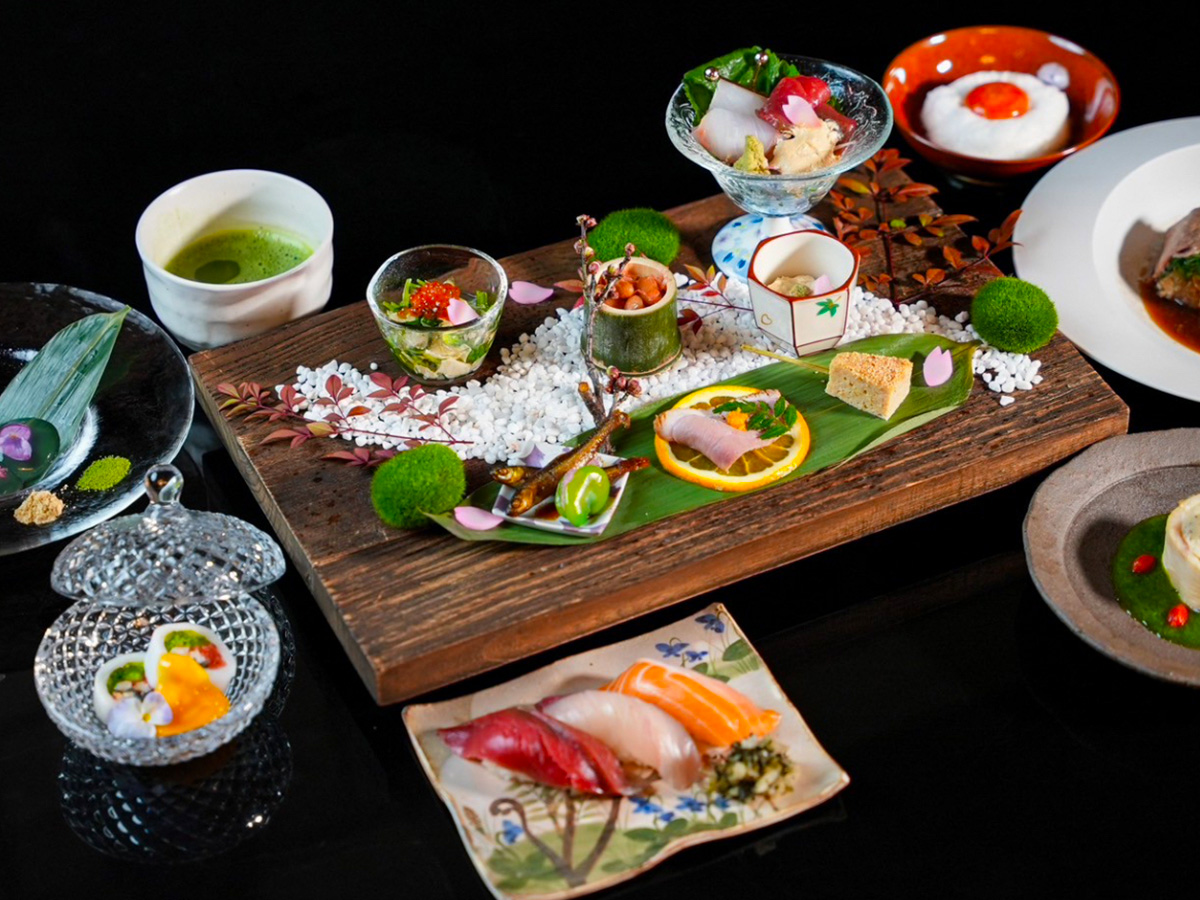
The Philosophy Behind Japanese Cuisine
At the heart of Japanese cooking is the concept of washoku (和食), which literally means 'Japanese food'. Recognized by UNESCO as an Intangible Cultural Heritage, washoku emphasises seasonality, freshness, and balance, both nutritionally and visually. A traditional meal follows the principle of ichiju-sansai (one soup, three sides), creating a wholesome and satisfying dining experience.
Iconic Japanese Dishes You Should Know
1. Sushi & Sashimi: Perhaps the most internationally recognised, sushi is a delicate pairing of vinegared rice with raw or cooked seafood, vegetables, or egg. Sashimi, in contrast, highlights thin slices of raw fish, served with soy sauce and wasabi, celebrating the quality and freshness of the seafood. I enjoyed some of the best sushi with my dear friend Kazuyo Asayama at Kouzushi, a tiny sushi bar tucked away in the bustling business district of Chiyoda. The chef prepared each piece just for us, based on the seafood we pointed out—fresh, unforgettable, and full of joy, until we simply couldn’t eat any more!
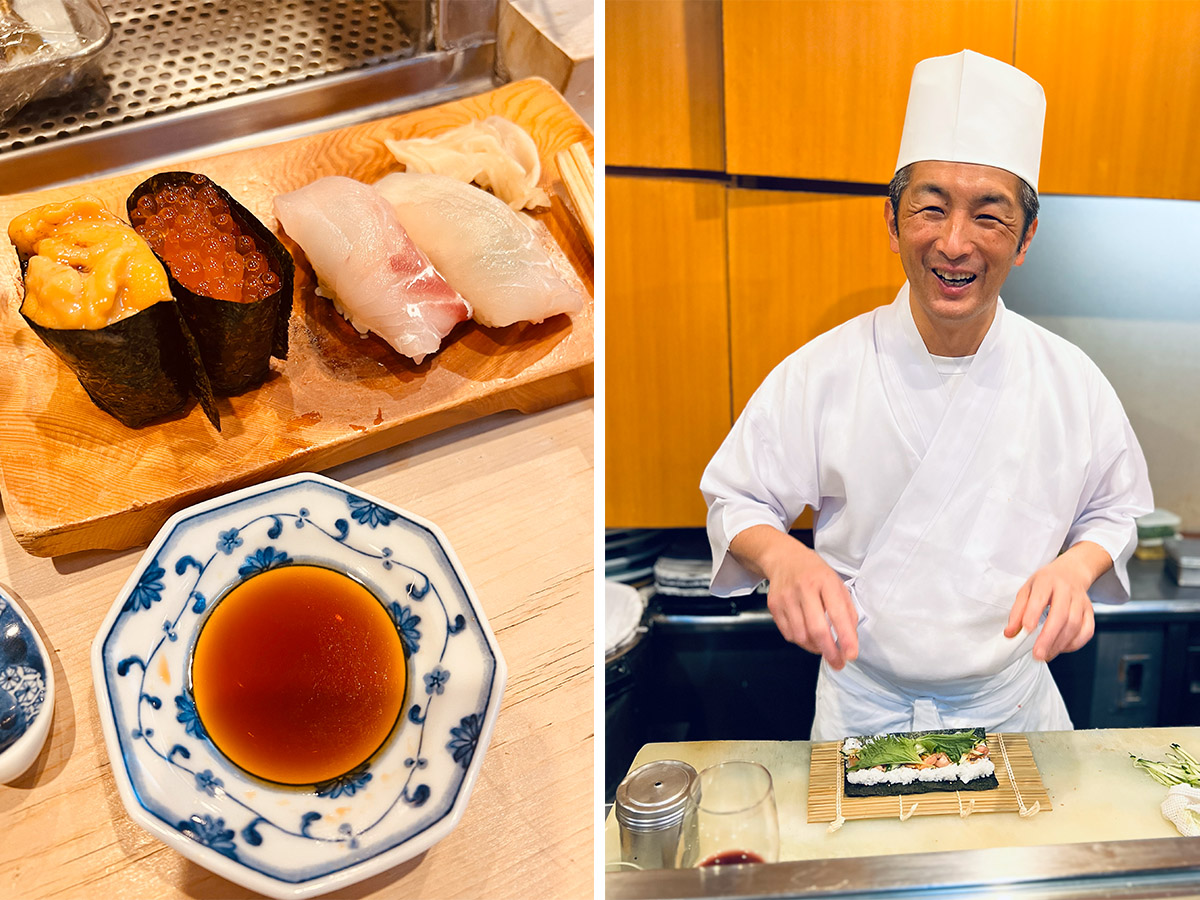
2. Ramen: Japan’s soul food: wheat noodles in a savoury broth, often topped with pork, green onions, soft-boiled eggs, and more. Regional variations abound, from Hokkaido’s miso ramen to the creamy tonkotsu (pork bone) broth of Kyushu.
3. Tempura: A perfect balance of crunch and delicacy, tempura features seafood or vegetables coated in a thin batter and deep-fried to golden perfection. Served with a dipping sauce of soy, mirin, and dashi, plus a touch of grated daikon, it’s pure bliss.
4. Takoyaki & Okonomiyaki: These Osaka street food icons are both delicious and fun. Takoyaki are savoury, crispy balls filled with octopus, while okonomiyaki is a cabbage pancake packed with a mix of ingredients, often called the 'Japanese pizza'.
5. Kaiseki: The pinnacle of Japanese fine dining, kaiseki is a multi-course feast showcasing seasonal ingredients with exquisite artistry. My lovely friend Junko and I shared a magical lunch during our walk through the famous plum gardens in Mito (see Chapter 2 for more). Try absolutely fabulous modern style rice cakes full of colorful edible flowers and an unforgettable fine-dining experience, chef’s omakase (or chef’s choice) at Rokujuan in Kyoto (a tip from Junko). Check the header image of my foodie blog again to see an incredible modern style rice cake full of colorful edible flowers at Rokujuan.
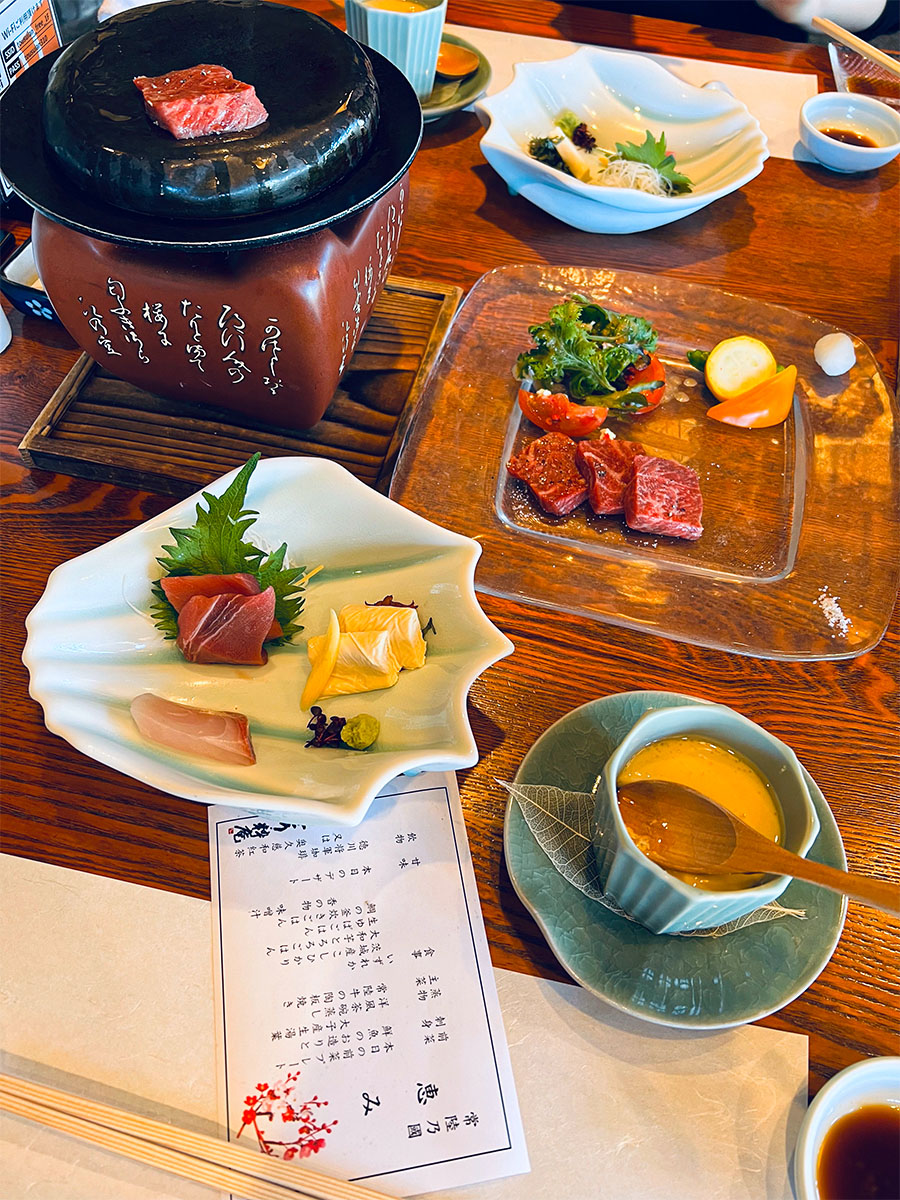
6. Japanese Hot Pot (Nabe): A beloved dish for colder months, nabe is a communal, simmering pot of ingredients. One version, sukiyaki, features wagyu beef in a sweet soy-based broth. Another, shabu-shabu, involves swishing meat briefly in hot broth and dipping it in savory sauces. I was honored to enjoy sukiyaki during my friend Toshi’s birthday celebration, an experience I’ll always treasure (more in Chapter 1!).
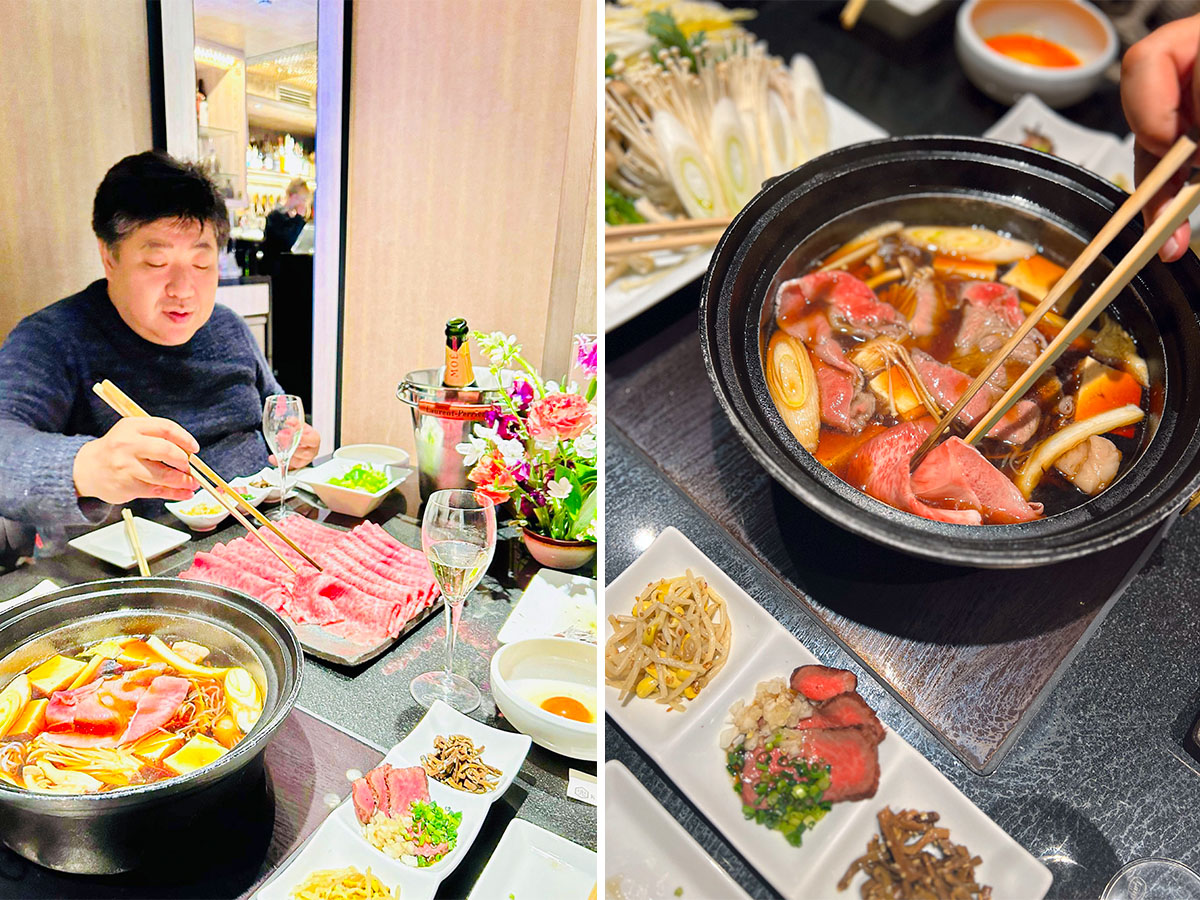
Japanese Street Food: Flavor on the Go
Street food in Japan is an adventure on its own, vibrant, flavorful, and steeped in tradition. Whether at a festival (matsuri) or along Osaka’s backstreets, you’ll find irresistible delights:
- Takoyaki: Crispy octopus-filled balls, flipped with flair.
- Hiroshima-style Okonomiyaki: Layered, often with yakisoba inside.
- Yakitori: Grilled chicken skewers, served outside izakayas with a cold drink.
- Taiyaki: Fish-shaped cakes filled with red bean, custard, or cheese.
- Yakisoba: Stir-fried noodles with pork and cabbage, topped with seaweed flakes.
- Kakigōri: Fluffy shaved ice with matcha, syrups, or condensed milk, a summer must.
Street food here isn’t just convenient, it’s crafted with care and filled with local flavor.
Sweet Traditions: Wagashi and Japanese Desserts
No culinary journey through Japan is complete without wagashi (和菓子), traditional Japanese sweets. They’re as visually stunning as they are delicious, often designed to reflect the seasons.
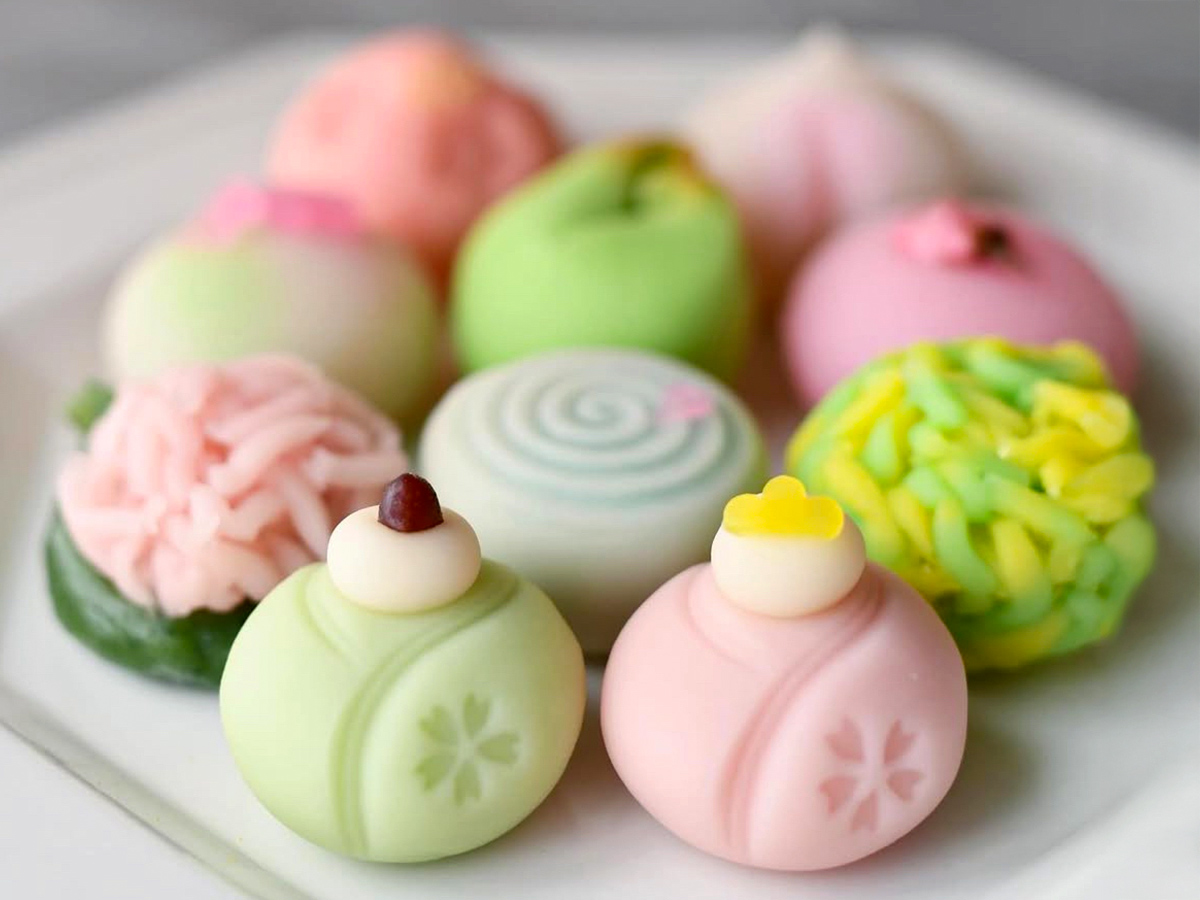
- Mochi-gashi: Chewy rice cakes filled with sweet red bean (daifuku, sakura mochi, and even mochi ice cream).
- Dorayaki: Two pancake-like cakes filled with red bean paste or custard.
- Yokan: A firm jelly made of red bean, agar, and sugar, served in elegant blocks.
- Kakigōri: Reappears here too, this time in stylized café creations.
The textures are delicate, the flavours subtle, and the artistry undeniable.
Tips: Enjoy these amazing, cute sweets by Tanno Wagashi. Another pastry shop in Kyoto recommended by Junko: Umezono Kyoto.

The Tradition of Matcha
Matcha is more than tea, it’s a cultural ritual. Used in the centuries-old tea ceremony (chanoyu), matcha is prepared with grace and intention, symbolizing harmony and presence. It’s made from shade-grown leaves, ground into fine powder, and whisked into a vibrant, umami-rich drink. Today, matcha also flavours sweets, lattes, and even savoury dishes.
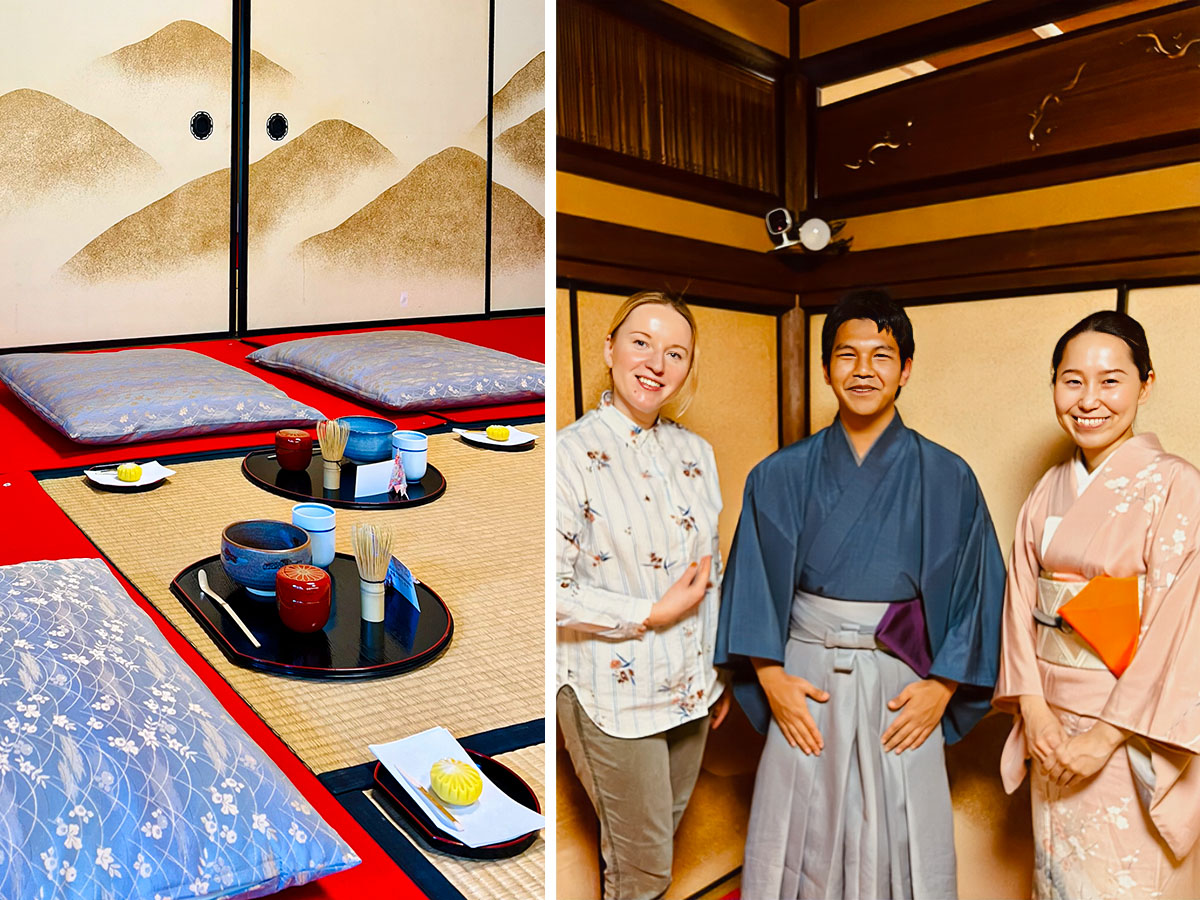
Junko gifted my husband Chris and me a precious matcha set, ceremonial cups, a whisk, a bamboo spoon, and tea during her visit to Amsterdam last week. A gift I deeply cherish.
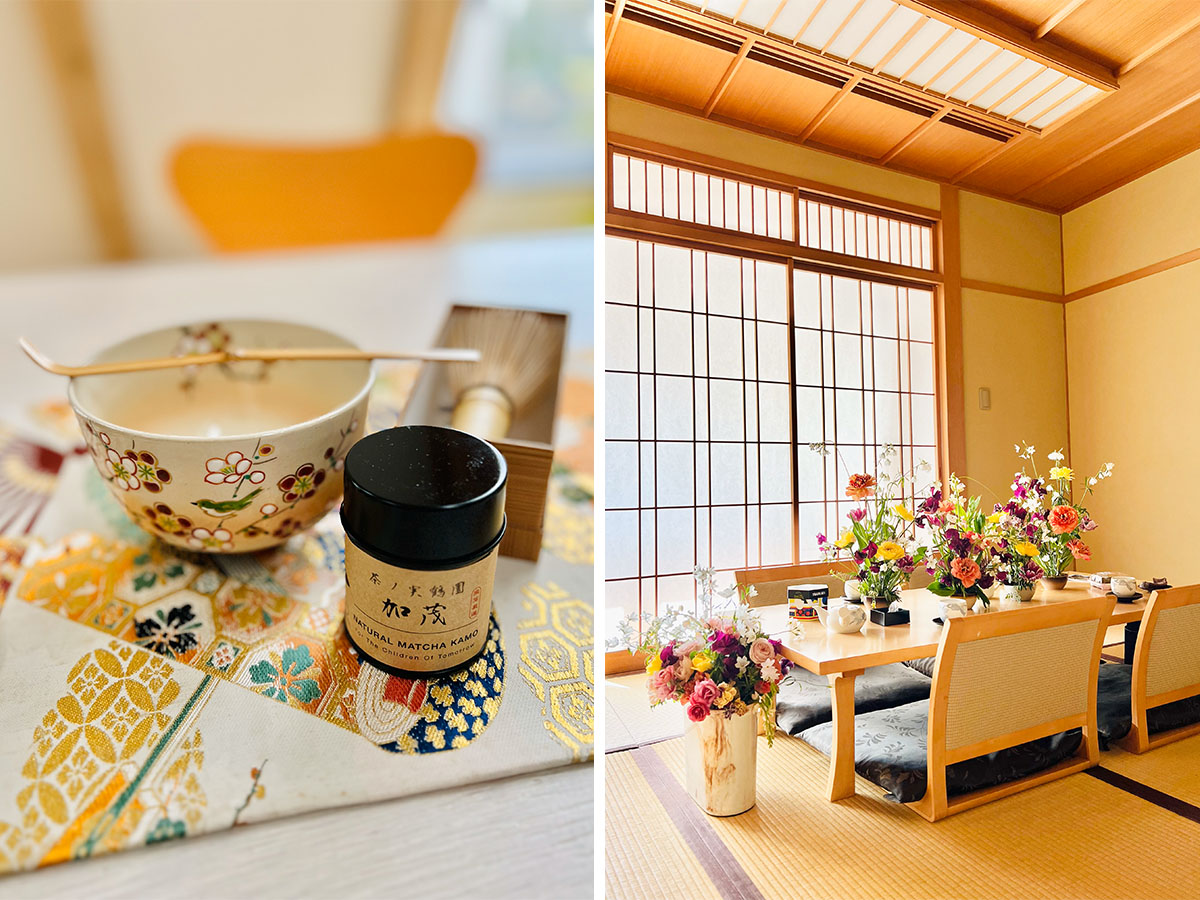
Japanese Home Cooking: Comfort in Every Bite
While restaurant meals shine, the soul of Japanese food lies in katei ryori, home cooking. Rooted in simplicity and seasonality, it’s modest yet deeply nourishing. Think: grilled fish, miso soup, pickled vegetables, nikujaga (beef and potato stew), gyudon (beef bowl), or tamago-yaki (rolled omelette). You can taste this warmth at a teishoku-ya, simple diners found in every town, offering comforting set meals at a reasonable price.
The Beauty of Simplicity
Japanese cuisine celebrates restraint. Instead of masking ingredients, it lets them shine. A grilled fish with miso soup, a seaweed-wrapped rice ball (onigiri), all examples of this graceful approach.
Seasonal and Regional Diversity
Japan’s geography shapes its culinary identity. In the north, seafood and warming hot pots. In the south, tropical fruits and fusion dishes. Seasonal delights, like sakura sweets in spring or chestnut rice in autumn, make each visit a new taste experience.

Food Etiquette to Keep in Mind
A few small gestures make a big difference:
- Say “Itadakimasu” before the meal and “Gochisousama deshita” after.
- Don’t stick chopsticks upright in rice, it’s linked to funerals.
- Slurping noodles? Totally okay! It shows you’re enjoying them.
In Conclusion
Japanese food is a reflection of the nation’s soul, thoughtful, precise, seasonal, and always delicious. Whether sipping matcha with mochi, grabbing yakitori on a busy street, or savouring a bowl of ramen in a quiet alley, each bite tells a story.
Next time you enjoy a piece of wagashi, a bowl of rice, or a comforting home-style meal, remember: you’re not just eating. You’re tasting Japan.
I hope you enjoyed this story! You can read the other chapters from my journey to Japan here:
- Chapter 1 - Japanese People
- Chapter 2 - Japanese Blossom Trees
- Chapter 3 - Japanese Flowers
- Chapter 4 - The Art of the Japanese Kimono
- Chapter 5 - Wabara, Love at First Sight
- Chapter 7 - Letting Flowers Speak
With love and respect,
Katya
Reportage Photography & Story: Katya Hutter Floral Design (Instagram: @katyahutterfloraldesign).
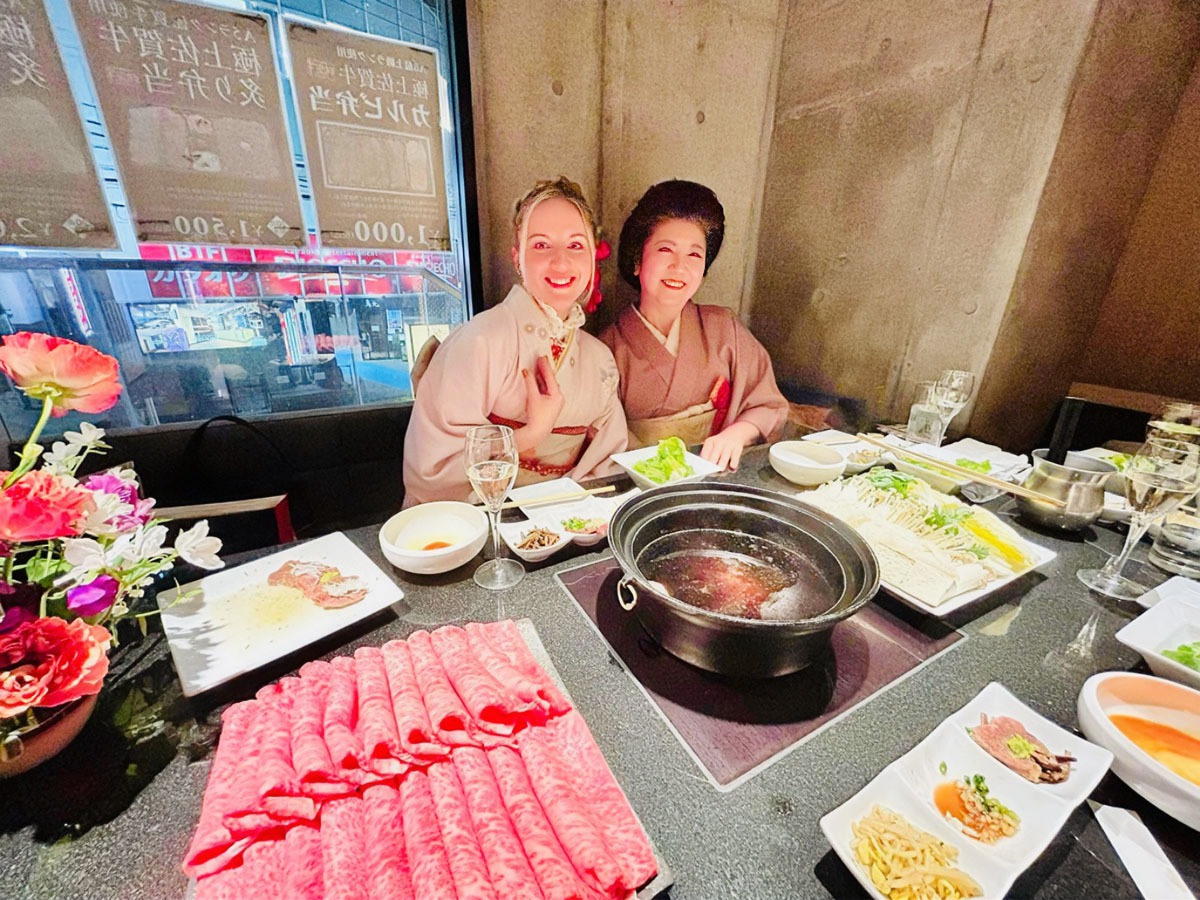
Bonus Chapter: Tokyo Food & Sightseeing Tips
From my dear friend Eori Wakakuwa, a Tokyo native and Amsterdam-based videographer.
During my time in Japan, I was lucky to receive a curated list of cultural and culinary gems in Tokyo from my talented friend Eori Wakakuwa. Eori is not only an incredibly skilled videographer but also a passionate Tokyo local who knows the city’s artistic soul and hidden treasures. I’m so happy to share her personal tips with you, it’s the perfect guide if you’re planning to explore Tokyo’s more refined and local side.
Cultural Spots
Nezu Museum
This museum holds one of the finest collections of traditional Japanese art and crafts. The architecture by Kengo Kuma is stunning, and the garden is a peaceful oasis in the city. If you’re lucky, you can view the Tea Ceremony Room, open from 15:00–16:00 on specific dates. The area is also known for fashion boutiques like Issey Miyake and Comme des Garçons.
📍 6-5-1 Minamiaoyama, Minato-ku, Tokyo. 🔗 Nezu Museum Website.
Sogetsu Kaikan
The headquarters of the Sogetsu School of Ikebana, one of Japan’s most influential floral art movements. The building itself is impressive, and you’ll find a bookshop with treasures on floral design and Japanese aesthetics.
📍 7-2-21 Akasaka, Minato-ku, Tokyo. 🔗 Sogetsu Kaikan Website.
Japanese Garden at Hotel New Otani
A beautiful and tranquil Japanese garden in the heart of the city. Just a short walk from where I stayed. Entry is free and there are restaurants and cafés on site—including Kyubey, one of Tokyo’s most prestigious sushi restaurants.
📍 4-1 Kioi-cho, Chiyoda-ku, Tokyo. 🔗 More about the Garden.
Aoyama Book Center Tokyo
A dream for art and design lovers, this is one of Tokyo’s best bookstores for books on traditional Japanese culture, floral art, and color.
📍 5-53-67 Jingumae, Shibuya-ku, B2F Cosmos Aoyama Garden. 🔗 Bookstore Website.
Restaurants to Try
Toraya Akasaka (Japanese Sweets Café)
A beautifully refined sweets shop and café. Try the Anmitsu, a traditional Japanese dessert that’s as elegant as it is delicious. Great for souvenirs too.
📍 4-9-22 Akasaka, Minato-ku. 🔗 Toraya Akasaka Info.
Kisurin Aoyama (Modern Chinese).
An everyday favorite for locals—casual but very good modern Chinese food. Ideal for lunch after a visit to the Nezu Museum.
📍 5-1-25 Minamiaoyama, 2nd Floor. 🔗 Kisurin Info.
Tempura Hatanaka
One of Tokyo’s top tempura restaurants. The experience is elegant, intimate, and unforgettable. Reservations recommended.
📍 2-21-10 Azabujuban, Minato-ku. 🔗 Tempura Hatanaka Info.
Nodaiwa Azabu Iikura Honten (Grilled Eel)
This historic restaurant specializes in unagi (grilled eel). A truly authentic Japanese culinary experience—Eori’s personal favorite!
📍 1-5-4 Higashiazabu, Minato-ku. 🔗 Nodaiwa on Michelin Guide.
Cafés & Street Food Near Omotesando
All of these are walkable from the Nezu Museum and offer a charming way to explore Tokyo’s more relaxed, artisanal side.
Blue Brick Lounge
A stylish café by a famous confectionery brand. Try their delicate langue de chat cookies—beautifully packaged and perfect as gifts.
📍 5-3-3 Minamiaoyama, Minato-ku. 🔗 Blue Brick Lounge Info.
Tonkatsu Maisen (Omotesando)
One of Eori’s favorite spots for tonkatsu—a Japanese-style breaded pork cutlet that’s crispy on the outside and tender within.
📍 4-8-5 Jingumae, Shibuya-ku. 🔗 Maisen Info.
Heiroku Sushi (Omotesando)
Affordable and cheerful, this is a casual sushi bar where locals love to eat. No frills, but great quality.
📍 5-8-5 Jingumae, Shibuya-ku. 🔗 TripAdvisor Reviews.
Two Areas to Explore on Foot
Omotesando
Eori’s top pick for a walking adventure. This stylish boulevard is home to high-end boutiques, hidden cafés, concept stores, and art galleries. It’s elegant and effortlessly creative.
🔗 Omotesando Guide.
Daikanyama
Often called 'Tokyo’s little Brooklyn', Daikanyama is calm, chic, and full of personality. You’ll find independent bookstores, designer shops, and cozy coffee spots.
🔗 Savvy Tokyo Guide.
Final Thoughts
These heartfelt recommendations from Eori helped shape some of my favourite moments in Tokyo, where tradition meets creativity, and every street corner holds a surprise. If you’re planning a trip, I hope this list gives you a meaningful and stylish head start.
With love from Tokyo,
Katya xxx
Special thanks to Eori Wakakuwa.

